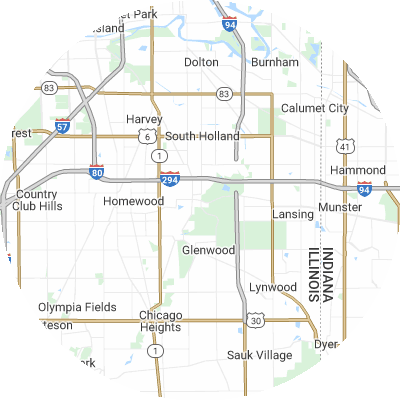Signs You May Need Gutter Guards
While gutter guards aren't always needed, the signs of clogged gutters are clear. Issues stemming from persistent gutter problems include:
- Leaky joints or seams where water leaks out of gutters
- Visibly saggy, damaged, or misaligned gutters that no longer correctly direct rainwater
- Soggy ground or visible erosion around your house's foundation
- Mold growth, peeling exterior paint, or interior water stains on walls near gutters.
- Frequent clogs that cause overflow and water to spill over gutters
How To Choose a Gutter Guard Installer
Assess Their Experience
When choosing an installation company, look for one with considerable experience and knowledge about various brands and guard types. A company with experience will understand how to take measurements and fit gutter guards for your specific needs. Inquire about a provider's years of experience and request referrals from local customers.
Verify Proper Licensing and Insurance
When contacting potential installation companies, always confirm that they are properly licensed, bonded, and insured with both workers compensation and general liability policies. This protects you if any injuries or accidents occur. Request current licensing and insurance papers from potential providers.
Choose Reputable Brands
Look for reputable gutter guard brands such as LeafFilter and Gutter Helmet when selecting an installer. Avoid generic no-name or off-brand guards, which likely do not undergo the same level of rigorous testing.
Seek Custom Fit Services
For optimal performance, gutter guards need custom measurements and trimming on-site to match your gutters. Select a company that takes custom measurements and trims guards for your home instead of using one-size guards. Correctly-fitted guards prevent debris-trapping gaps from forming.
Examine Warranties
Top gutter guard installers are typically backed by 20-year or lifetime warranties covering clogs, leaks, rust, and other defects. Before selecting a provider, look into its warranty terms for workmanship and materials guarantees. Warranties are the best way to protect your gutter investment.
Check Reviews and Referrals
It's a good idea to look at online reviews on sites like Google Reviews, the Better Business Bureau (BBB), or Yelp to see what customers say about their experience. You can also ask your neighbors who they would recommend for quality gutter guard businesses near you. When researching potential providers, we recommend selecting companies with consistently good reviews rather than just one or two reviews.
Types of Gutter Guards
There are six most common gutter guard types. These include the following:
- Brush guards are what they sound like: large brush bristles that sit in your gutters and let water through while blocking debris. On average, you can expect to pay $4.04 per linear foot for brush guards.
- Foam guards are lightweight and easy to install. This type of guard catches debris on the foam and keeps it out of your gutter. Foam guards cost roughly $2.46 per linear foot.
- Screen guards have large holes that allow water to pass through while keeping debris out. Screen guards cost around $4.28 per linear foot.
- Mesh guards stop debris but allow water to flow through. Mesh guards have even smaller holes than screen guards. They're durable and let debris slide off as opposed to sitting on top of the gutters. Mesh guards cost around $4.05 per linear foot.
- Micro-mesh guards are usually the most effective. Micro-mesh guards have smaller holes than standard mesh guards, which lets even less debris through. Micro-mesh guards cost roughly $5.13 per linear foot.
- Surface tension guards, also called reverse curve guards, use surface tension to allow water to flow into your gutters while debris slides off. Normally, they can be seen from the ground. On average, you can expect to pay $3.15 per linear foot for surface tension guards.












